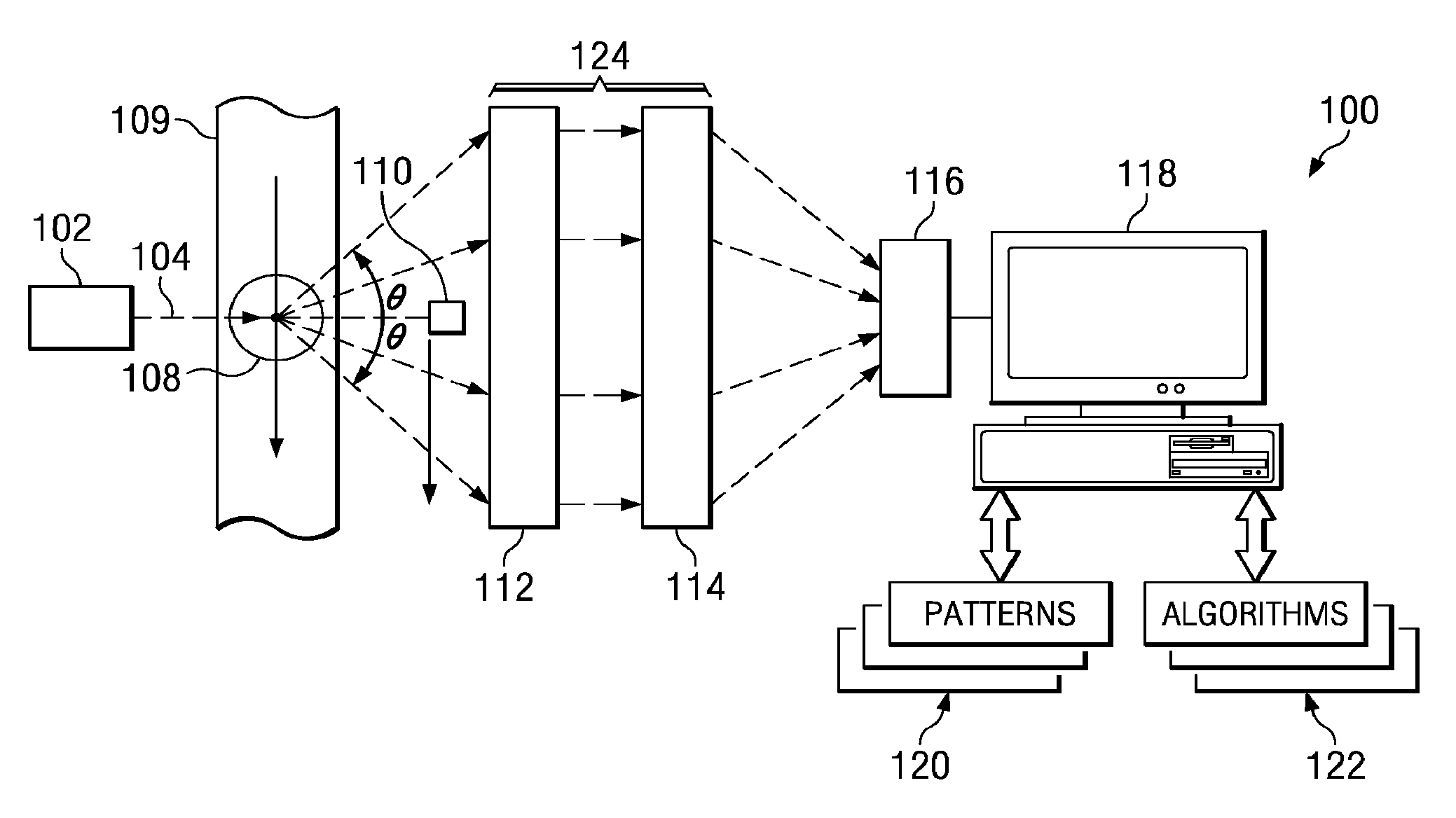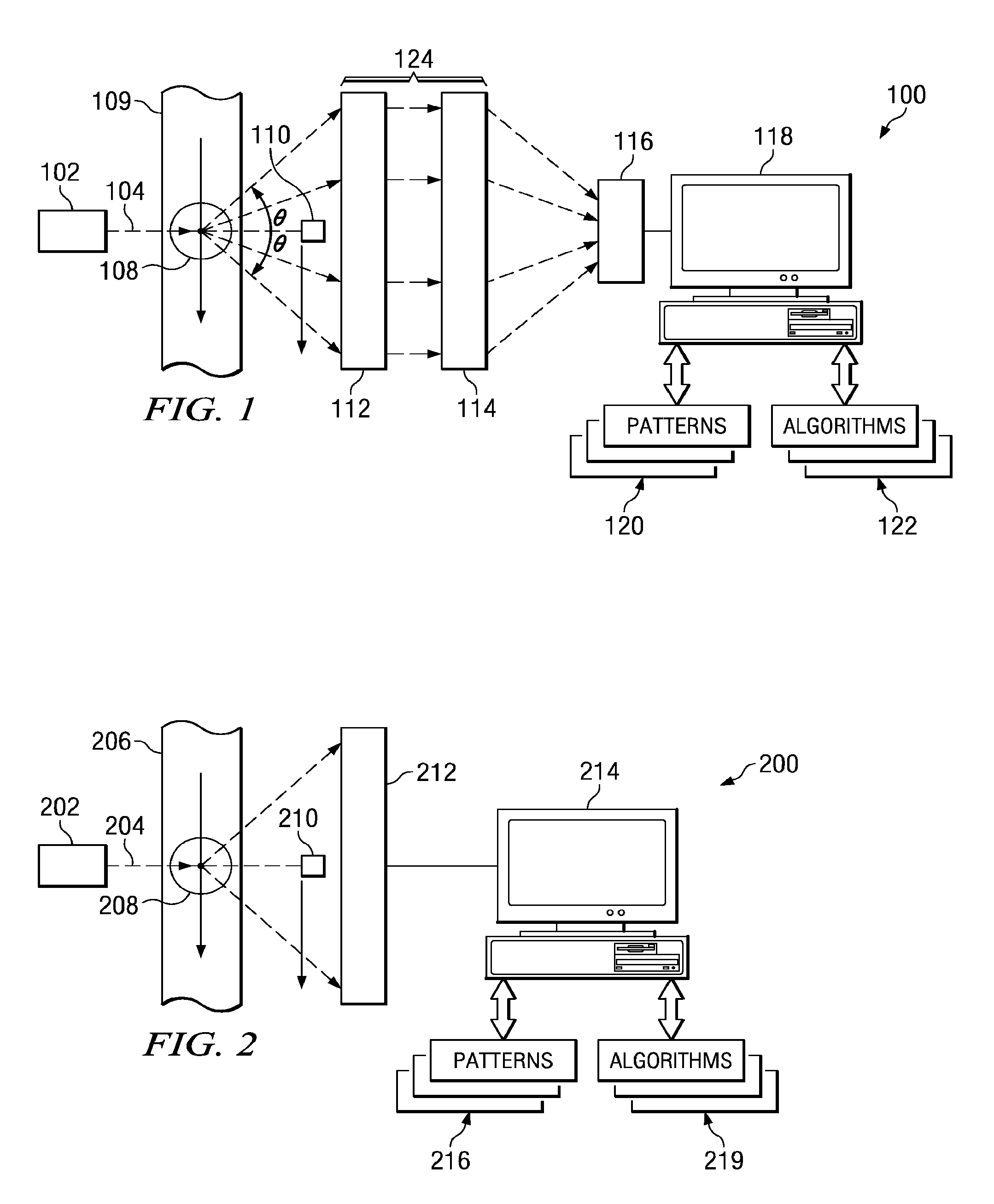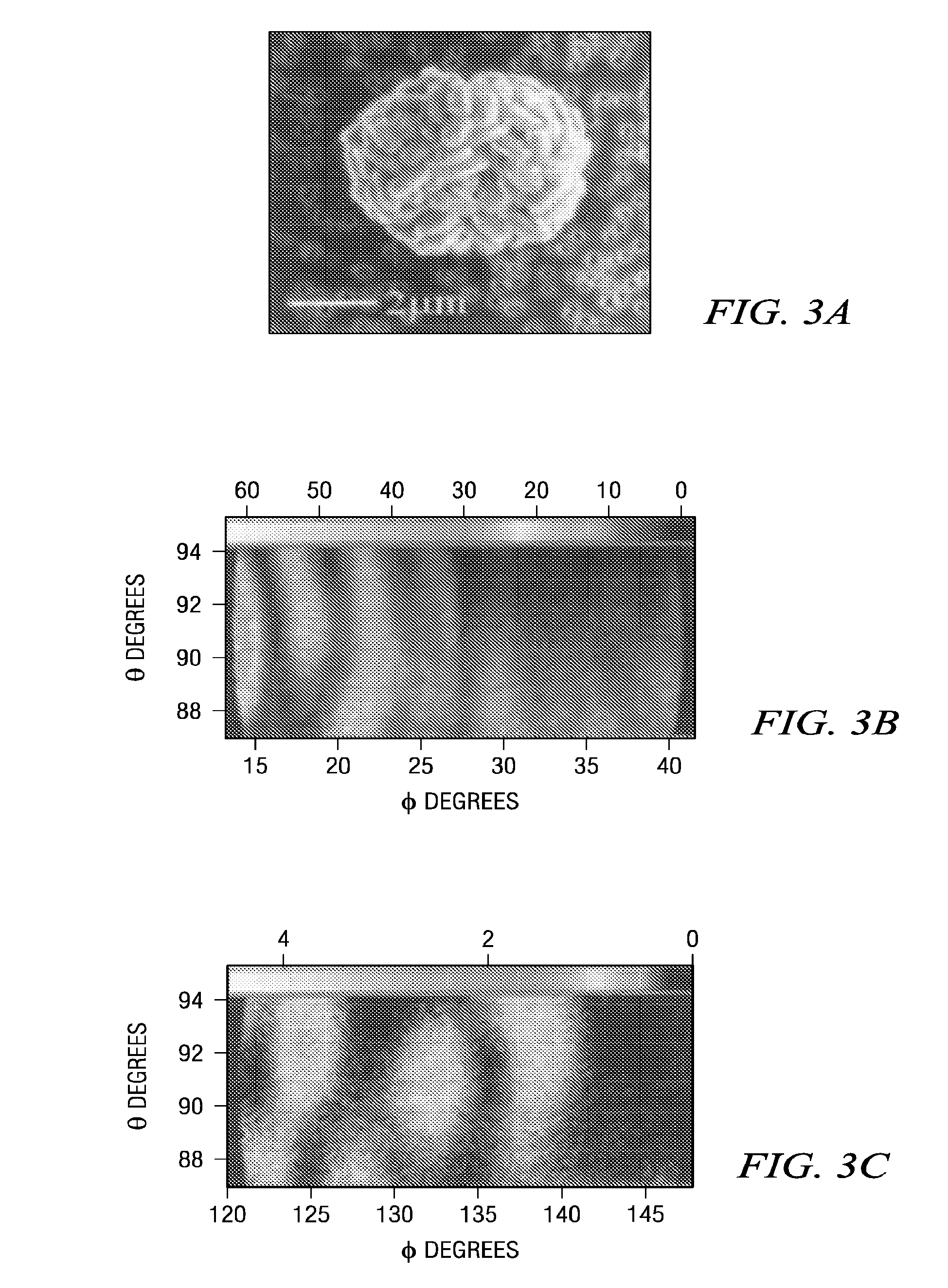Systems and methods for detecting radiation, biotoxin, chemical, and biological warfare agents using a multiple angle light scattering (MALS) instrument
a technology of light scattering and radiation detection, applied in the field of systems and methods for detecting radiation, biotoxin, chemical and biological warfare agents using a multiple angle light scattering (mals) instrument, can solve the problems of inability to detect microbial contaminants in real-time and on-line to provide a warning, and inability to provide reliable detection systems
- Summary
- Abstract
- Description
- Claims
- Application Information
AI Technical Summary
Problems solved by technology
Method used
Image
Examples
example 1
[0143]A Bio-Optical Signature (BOS) was generated for the spores B. subtilis and for the protozoan Cryptosporidium. Normal tap water from Rancho Bernardo in San Diego County was caused to flow through the system in the normal manner and the system run normally. The one (1) minute count rate for Unknown was 1341 counts per minute and for the B. subtilis species vectors was 40±6 counts per minute. A spike of B. subtilis containing solution was injected into the water flow at a concentration of 750 B.subtilis organisms per milliliter. For the vectors identifying B.subtilis the count rate increased from 40 to 117 counts per minute, clearly showing that B. subtilis was detected at 750 organisms per milliliter. A minimum level of detection was calculated at 522 organism per milliliter. The unknown count rate went from 1341 counts per minute to 1403 counts per minute.
example 2
[0144]A Bio-Optical Signature (BOS) was generated for the spores B. subtilis and for the protozoan Cryptosporidium (Crypto). Normal tap water from Rancho Bernardo in San Diego County was caused to flow through the system in the normal manner and the system run normally. The one (1) minute count rate for Unknown was 1521 counts per minute and for the Crypto species vectors was 57±11 counts per minute. A spike of Crypto containing solution was injected into the water flow at a concentration of 2000 organisms per milliliter. For the vectors identifying Crypto the count rate increased from 57 to 165 counts per minute, clearly showing that Crypto was detected at 2000 organisms per milliliter. A minimum level of detection was calculated to be 337 organisms per milliliter. The unknown count rate went from 1521 counts per minute to 1768 counts per minute.
example 3
[0145]Testing of E.coli in Bernardo Tap water and in Filtered (to 0.2 micron) Lab water indicates that the minimum levels of detection are 8000 organisms per milliliter in tap water and 24 organisms per milliliter in Filtered Lab water. This indicates that for the smaller species and to some extent larger species, the limit of detection is a function of not only the equipment design but also the normal level of bacteria or other interferences in the water. In the Bernardo Tap Water a significant number of Heterotrophic Plate Count bacteria and other naturally occurring bacteria are present and affect the minimum levels of extra bacteria that the system can detect. Generally, the background count rate and standard deviation of the count is used in part to calculate minimum detection levels. To be detectable, the extra bacteria have to provide a count rate that is statistically above the count rate from the normal background at either 1 sigma, 3 sigma, or 6 sigma above the background ...
PUM
| Property | Measurement | Unit |
|---|---|---|
| diameter | aaaaa | aaaaa |
| diameter | aaaaa | aaaaa |
| diameter | aaaaa | aaaaa |
Abstract
Description
Claims
Application Information
 Login to View More
Login to View More - R&D
- Intellectual Property
- Life Sciences
- Materials
- Tech Scout
- Unparalleled Data Quality
- Higher Quality Content
- 60% Fewer Hallucinations
Browse by: Latest US Patents, China's latest patents, Technical Efficacy Thesaurus, Application Domain, Technology Topic, Popular Technical Reports.
© 2025 PatSnap. All rights reserved.Legal|Privacy policy|Modern Slavery Act Transparency Statement|Sitemap|About US| Contact US: help@patsnap.com



